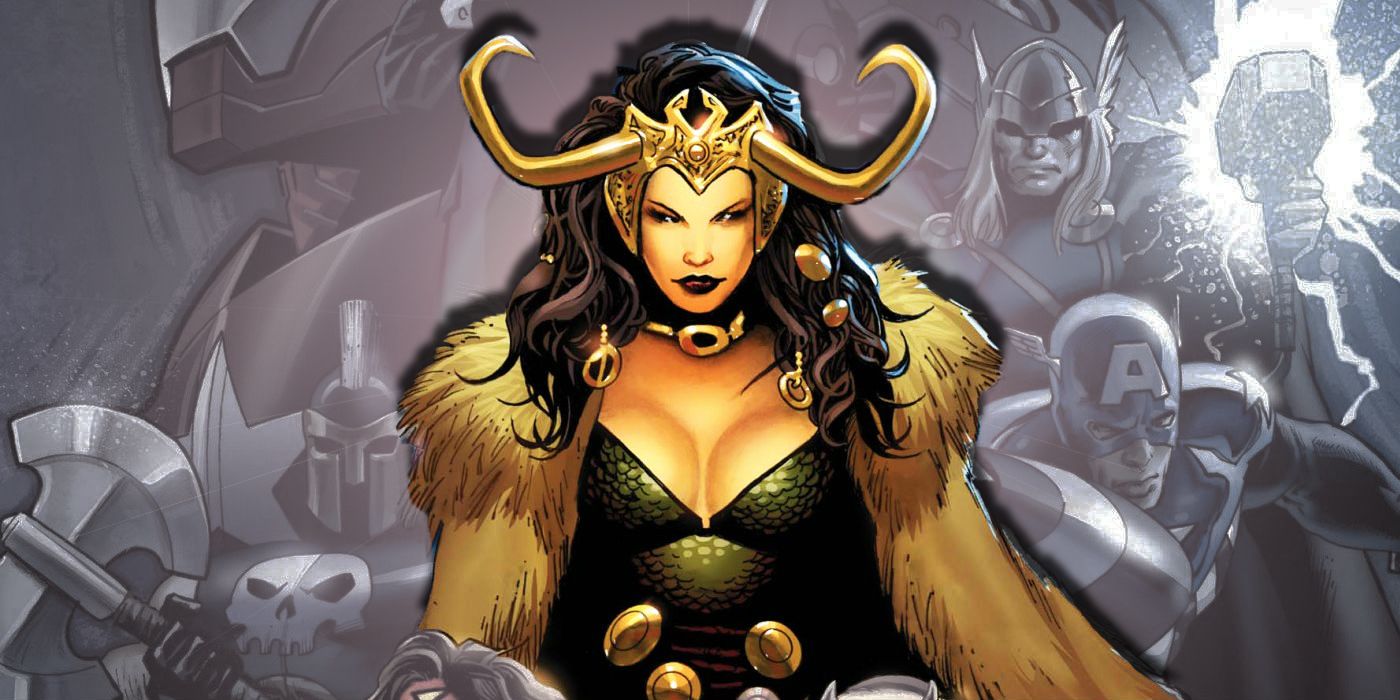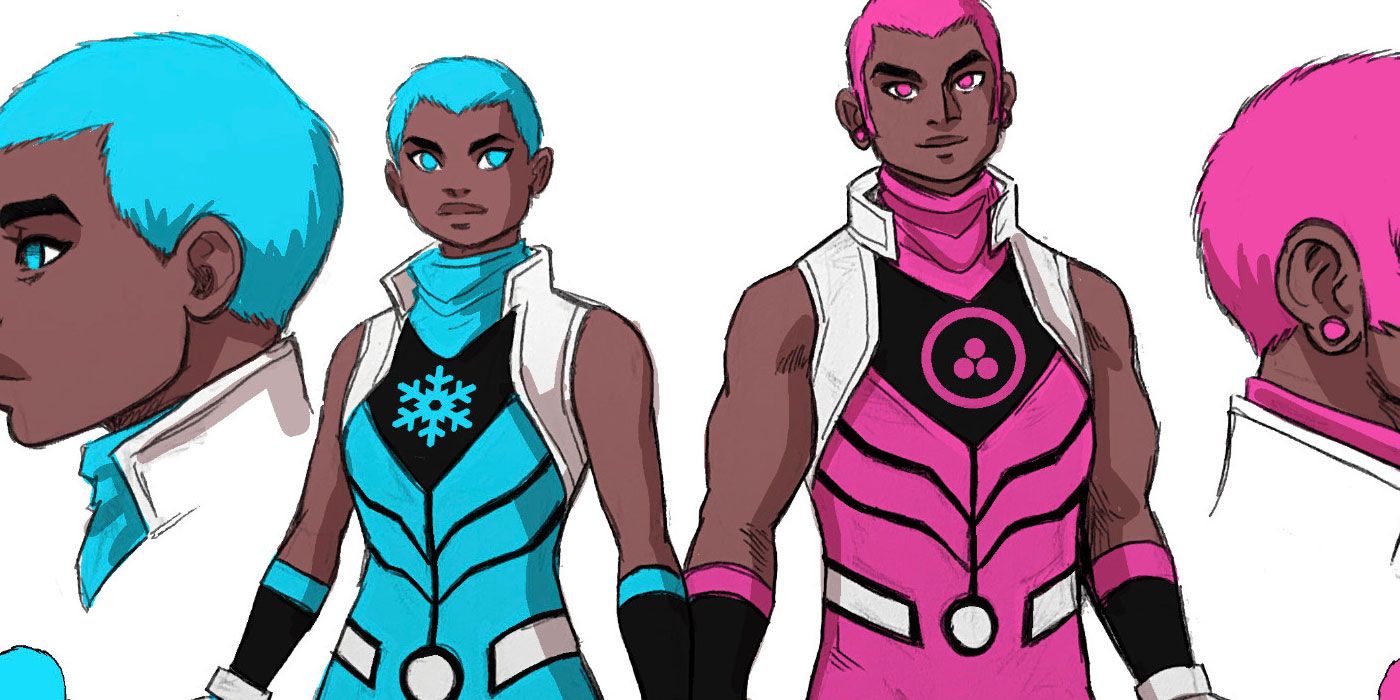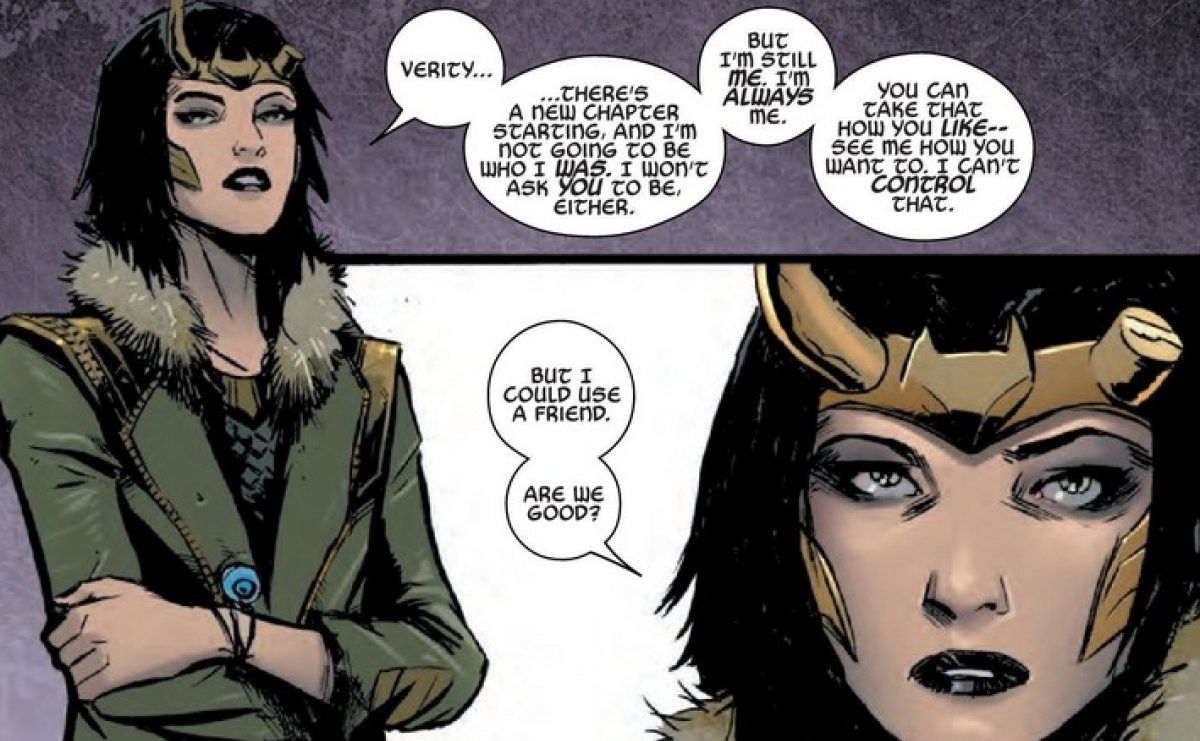Marvel Comics was incredibly proud to present Snowflake, a member of the "New" New Warriors created by Daniel Kibblesmith and Luciano Vecchio. Although the character is the publisher's first canonically non-binary character, the LGBTQIA+ community did not respond well to this announcement -- many saw Snowflake as a pandering, insulting character. From Snowflake's name to their design, the entire character felt like a stereotype of a non-binary person.While in a technical sense it's true Snowflake is the first canonically-identified non-binary character in the Marvel Universe, the publisher has had multiple characters who exist outside the gender binary for years, featuring them very prominently throughout their comics, films, cartoons, etc. From the God of Mischief, Loki, to characters who couldn't be identified as non-binary on the page, Snowflake's announcement draws attention to Marvel's problematic treatment of LGBTQIA+ characters over the years.
What Does Non-Binary Mean?
The term "non-binary" causes a lot of confusion. A non-binary individual is someone who falls outside the gender binary. The gender binary, in this case, refers to the classification of people as either male or female. Non-binary people typically don't identify as one or the other; however, this isn't an umbrella term for anyone who identifies outside the gender binary. Some people identify as bigender (both male and female), genderqueer or gender-fluid (identifying as both, neither, or one or the other gender at a time), or even agender (genderless). However, at the same time, a genderqueer person can also identify as non-binary. Identities overlap and it is ultimately up to the individual how they identify.
Non-binary gender identities have existed for thousands of years, especially when discussing divine entities. Many -- if not all -- of the Egyptian Gods, for example, were referred to in both the male and female form, such as Bes and Beset, who were the male and female forms of the same entity. These can be examples of bigender deities, who are simultaneously male and female. In Norse Mythology, the God Loki could transform into a female form, such as when he became a female horse to seduce a stallion as part of an elaborate prank. He was actually impregnated by said stallion, and returned nine months later as the mother of Odin's eight-legged horse, Sleipnir. This is an example of a gender-fluid or genderqueer deity.
This part of the Loki mythology was incorporated into the Marvel Universe in 2004 -- a full 16 years ago.
Loki is Sometimes Male, Sometimes Female
One very interesting aspect to Loki's character in recent years is the exploration of both his sexuality and gender identity. Arguably the big turning point for Loki's character in recent years was the time he took on a female form. During the events of Avengers: Disassembled, Ragnarok took place. Sif's spirit was displaced from her new body thanks to Loki, leaving her in the body of an old, dying woman while Loki inserted his spirit into the body Sif was supposed to occupy.
This at first appeared to be a prank or even disguise, but the longer Loki spent in Sif's body, the more Loki began to identify as a woman. She adopted female pronouns and performed villainous actions as part of Doctor Doom's Cabal. She remained in Sif's body up until the events of Siege, where Sif reclaimed her body and Loki took on his masculine form once more.
When Loki reappeared in Original Sin, however, readers learned the experience of being in Lady Sif's body was enough of a self-discovery for Loki that he would frequently transition between male to female identities, using shape-shifting magic to adjust his or her appearance depending on the gender he or she associated with at that time. Loki, therefore, is presented as a genderqueer or gender-fluid individual.
Mackenzi Lee, in her YA novel Loki: Where Mischief Lies, took this idea even further, fully exploring Loki's pansexuality and gender fluidity. Lee explained in an interview, "I think queer undertones are intrinsic to Loki and his magic. Being a shapeshifter already makes him fluid, and as far back as versions of him in the Norse myths, we see Loki manipulating his gender and taking a variety of partners. It would have felt disingenuous to portray him as anything else. And, while we’ve come a long way with representation in comics, we still have a long way to go. As for direct references on the page — like many people, I’m tired of queer rep being only subtext in media. We need to bring identity onto the page."
Marvel's Had a Rough History with Genders Outside the Binary
Loki isn't Marvel's only gender-fluid or genderqueer character. Loki and Snowflake both exist in a greater conversation of representation in Marvel Comics -- most notably, how Marvel has handled gender identity in its comics. Or, rather, how the publisher hasn't. Marvel has a history of erasing any characters who exist outside the gender binary.
Mystique's transformation abilities allow her to switch genders. She spent many years under the alias Eric Raven, posing as a man. In one scrapped story, readers learned Nightcrawler was Mystique's son with Destiny, an idea which did not get explored further. Another example of Marvel erasing gender identities outside the binary came with Sina Grace's run on Iceman. In response to Snowflake's announcement, Grace explained how Marvel prevented him from writing Madin, a leader inside the underground Morlocks being targeted by Mr. Sinister, as non-binary.
So Where Does Snowflake Fit In?
Marvel is positioning Snowflake as its first canonical non-binary character, and that's seemingly true. They aren't gender-fluid like Loki, but appear to fall outside the gender binary entirely, judging by how they use they/them pronouns, as opposed to Loki who primarily uses he/him and she/her.
It's also noteworthy Marvel's first canonical non-binary character is being written by a cisgender, heterosexual writer. Although Snowflake was co-created by Vecchio, who identifies as queer and uses "mostly he/him" pronouns according to his Twitter bio, the character's introduction still leaves much to be desired. Obviously, a writer can still create a character without any personal experience tying them to said character. However, it seems odd Marvel allegedly prevented LGBTQIA+ writers like Grace from writing canonically non-binary characters, rather than just hinting at their identities. In a 2019 Tumblr post that went viral, Grace stated, "From the get-go, my first editor asserted that Iceman would be DOA if it were 'too gay'...Marvel still treated me as someone to be contained, and the book as something to be nervous about." Marvel wanted Iceman to be gay, but didn't want to embrace an LGBTQIA+ perspective when writing said gay character.
Snowflake should be an example of Marvel doing better, taking steps forward rather than relying on stereotypes and cliches that ignore LGBTQIA+ voices. Instead, Marvel is actively shutting out LGBTQIA+ voices to create and promote a non-binary character who isn't "too gay." The publisher is leaning into superficial stereotypes, while ignoring its own history, which is a shame.





